How To Measure Shoe Size – A Perfect Guide With Sizing Chart
Wearing the right-sized can make all the difference between a good day and a bad day.
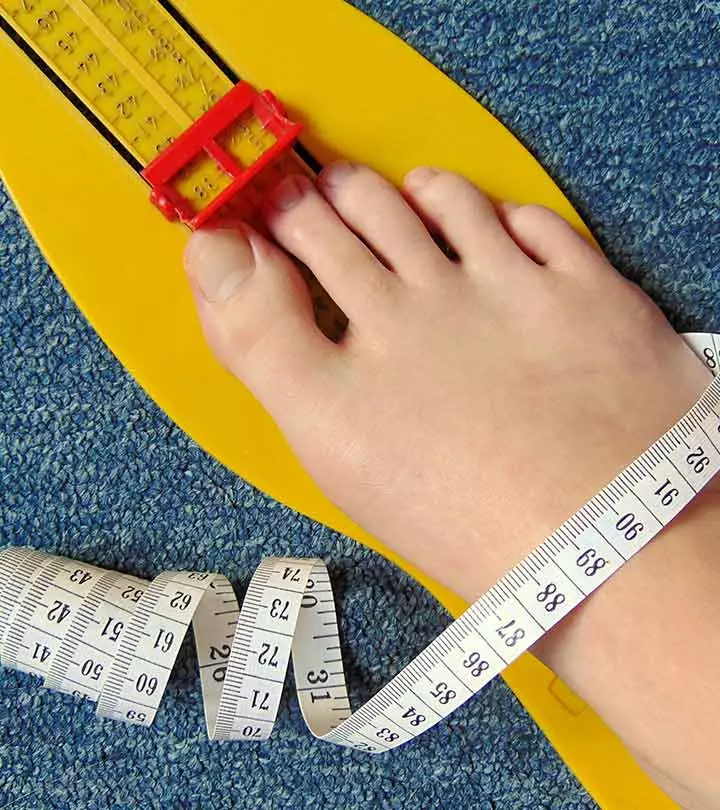
Image: Shutterstock
Shopping for shoes that fit you perfectly can be such a harrowing experience, especially when you are about to invest a lot of money. For starters, measuring your feet size is a foolproof way to arrive at the exact shoe size. Even though the sizing differs with brands and the measuring unit of the country you are based out of, big names are pretty standard and have set conversion charts. But how to measure foot size correctly? You’ll be surprised to learn that it is not that complicated and actually takes less than a couple of minutes to measure your feet. If you have always been confused about finding the right size, your struggle ends here. Scroll down to learn how to measure shoe size of your feet correctly.
In This Article
A Detailed Guide On How To Measure Shoe Size At Home
If you want to learn how to measure your shoe size the right way, this guide has you covered. Learn what you need to measure and use the tips.
You Will Need
- Measuring tape or ruler
- Paper – 2 big pieces
- Pencil or a marker
- Chair to sit on while taking the measurement
How To Measure
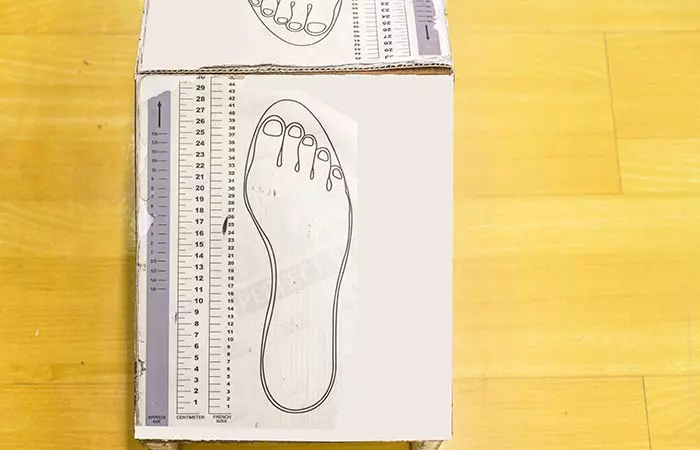
- The easiest and most accuracy-ensured way to do it is to first stick the paper to the floor with a tape so that it does not move.
- Sit on the chair and place one foot on the paper.
- Place the pencil/marker perpendicular to the paper and not at an angle, because then you might end up taking the outline from under the foot and not realize it.
- Now, trace the outline of your feet, one foot at a time. There will be some difference between the width and length of both feet.
- Now, make a note of the length by measuring from the tip of the heel to your longest toe – remember the big toe is always not the longest.
- Now, repeat the process for the width measurement: place your foot on the paper and trace the outline around the broadest part, which is usually at the ball of the foot. This helps accurately capture the full width.
- Do the same with the width, measure the broadest part of your foot.
- Make a note of these numbers. And, use the larger number among the two.
- You then need to subtract ‘3/16’ from the number; you need to do this to make up for any difference between the line and the physical shoe.
- That will finally become your shoe measurement.
- You will now have to convert this according to your country’s measurement units. See the conversion charts below.
P.S – If you are measuring your feet for shoes, then wear socks, because you will be wearing them with your shoes.
 Quick Tip
Quick TipKey Takeaways
- The most accurate way to determine your foot size is to measure your feet using a tool rather than using different size charts or conversion charts.
- The system of measuring your feet’ size is easy and takes only a few minutes with a measuring tape or ruler, paper, and a pencil or marker.
- To get the correct measurement, it’s important to trace the outline of both feet and measure the length and width, using the larger number.
- Lastly, subtract 3/16 from the length measurement and convert it to the appropriate measurement unit based on your country’s standard. Remember to wear socks when measuring your feet for shoes.
An accurate shoe size is essential to maintain comfort and ensure optimum foot performance. But, making certain errors when measuring the same is common, especially if you are doing it on your own for the first time. We have listed some errors below and provided practical tricks to avoid making them. Check them out.
Common Pitfalls When Measuring Shoe Size & How To Avoid Them
When you are measuring your shoe size at home, making a few errors is common. But, these can lead you to take the incorrect measurements. So, we have suggested tips to avoid them. Continue reading.
- Measuring At The Wrong Time
- Feet swells throughout the day, so measuring it in the morning is not the best way to go.
- Measure your feet in the late afternoon or the evening when they are at their largest size. This will help you get the most accurate size.
- Using The Wrong Surface
- Measuring your feet on an uneven surface or a soft one can result in incorrect readings.
- Place the feet on a hard, even surface to get accurate dimensions.
- Ignoring The Width Of The Foot
- People usually tend to measure the length of their feet and purchase shoes. Ignoring the width lands you with shoes that feel tight on the sides.
- Measure both the length and width of your feet to determine if you need narrow or wide-fit shoes.
- Not Considering The Arch Type
- Another common thing that people miss out on is measuring their arch height. Wearing shoes that do not provide appropriate arch support can damage your joints and cause pain.
- Measure your arch height to identify if you have a low, medium, or high arch to buy the right shoes.
- Not Keeping Toe Space In Mind
- Buying shoes that are your exact size is great but they may feel restrictive. Not accounting for toe space can cause several foot problems.
- Measure the length of your feet, leaving half an inch of space from your longest toe. This will ensure comfort and allow your toes to move freely.
In the next section, we have detailed the standard foot sizes for men and women across different countries. Scroll down.
Shoe Size Chart – Women
| Cms | Inches | UK Sizes | US Sizes | EU Sizes | India Sizes |
|---|---|---|---|---|---|
| 20.8 | 8.1875” | 2 | 4 | 35 | 2 |
| 21.3 | 8.375” | 2.5 | 4.5 | 35 | 2.5 |
| 21.6 | 8.5” | 3 | 5 | 35-36 | 3 |
| 22.2 | 8.75” | 3.5 | 5.5 | 36 | 3.5 |
| 22.5 | 8.875” | 4 | 6 | 36-37 | 4 |
| 23 | 9.0625” | 4.5 | 6.5 | 37 | 4.5 |
| 23.5 | 9.25” | 5 | 7 | 37-38 | 5 |
| 23.8 | 9.375” | 5.5 | 7.5 | 38 | 5.5 |
| 24.1 | 9.5” | 6 | 8 | 38-39 | 6 |
| 24.6 | 9.6875” | 6.5 | 8.5 | 39 | 6.5 |
| 25.1 | 9.875” | 7 | 9 | 39-40 | 7 |
| 25.4 | 10” | 7.5 | 9.5 | 40 | 7.5 |
| 25.9 | 10.1875” | 8 | 10 | 40-41 | 8 |
| 26.2 | 10.3125” | 8.5 | 10.5 | 41 | 8.5 |
| 26.7 | 10.5” | 9 | 11 | 41-42 | 9 |
| 27.1 | 10.6875” | 9.5 | 11.5 | 42-43 | 9.5 |
| 27.6 | 10.875” | 10 | 12 | 42-43 | 10 |
Shoe Size Chart – Men
| Cms | Inches | UK Sizes | US Sizes | EU Sizes | India Sizes |
|---|---|---|---|---|---|
| 23.5 | 9.25” | 5.5 | 6 | 39 | 5.5 |
| 24.1 | 9.5” | 6 | 6.5 | 39 | 6 |
| 24.4 | 9.625” | 6.5 | 7 | 40 | 6.5 |
| 24.8 | 9.75” | 7 | 7.5 | 40-41 | 7 |
| 25.4 | 9.9375” | 7.5 | 8 | 41 | 7.5 |
| 25.7 | 10.125” | 8 | 8.5 | 41-42 | 8 |
| 26 | 10.25” | 8.5 | 9 | 42 | 8.5 |
| 26.7 | 10.4375” | 9 | 9.5 | 42-43 | 9 |
| 27 | 10.5625” | 9.5 | 10 | 43 | 9.5 |
| 27.3 | 10.75” | 10 | 10.5 | 43-44 | 10 |
| 27.9 | 10.9375” | 10.5 | 11 | 44 | 10.5 |
| 28.3 | 11.125” | 11 | 11.5 | 44-45 | 11 |
| 28.6 | 11.25” | 11.5 | 12 | 45 | 11.5 |
| 29.4 | 11.5625” | 12.5 | 13 | 46 | 12.5 |
| 30.2 | 11.875” | 13.5 | 14 | 47 | 13.5 |
| 31 | 12.1785” | 14.5 | 15 | 48 | 14.5 |
| 31.8 | 12.5” | 15.5 | 16 | 49 | 15.5 |
Tovah Robinson, a footwear designer and a blogger, shares her experience of her foot size changing with time in her personal blog, noting, “One mom after another chimed in about how they previously wore a smaller shoe size, but now their size seemed to increase after kids. This phenomenon is common with mothers, but it actually affects all people due to a variety of circumstances. In my own experience, my shoe size increased from a 7.5 / 8 US in my 20’s to my current 8.5 / 9 US, and I started to notice the change even prior to having kids (i).”
Now that you have gathered a detailed idea about the standard shoe sizes used in manufacturing, it’s important to understand why finding the right size of shoes is emphasized so much. Scroll down.
Why Is Accurate Shoe Size Crucial For Foot Health?
Wearing the right shoe size ensures optimal comfort and prevents foot problems. Our feet bear the entire weight of our body, so, they endure a lot of stress. Therefore, providing the right level of support to the feet is essential. Keep reading to learn the reasons for wearing the correct shoe size in detail.
- Shoes that fit snugly around your feet allow proper blood flow, keeping your feet energized and healthy. Shoes that are too tight restrict blood circulation, making the feet feel numb. They can even cause nerve damage in the long run.
- The right shoes do not create much friction against your feet’ skin, letting you walk comfortably. They let your feet breathe, reducing the risk of corns, calluses, and blisters. If you wear the accurate shoe size, the pressure points on your feet don’t get strained unnecessarily.
- Shoes of the correct size help maintain the natural arch shape of your feet, essential for optimal shock absorption. The incorrect shoe size will change your feet’ arch shape, straining your ankles. It will also hurt your knees and hips.
- The incorrect foot size can affect your natural foot motion causing overpronation or supination, which severely damages the joints. The shoes of the right size sit snugly around your feet, supporting your foot movement and boosting your feet’ efficiency.
- Tight shoes cause excessive sweating and the trapped moisture can deteriorate nail health. It can also result in ingrown nail formation and fungal infections. Shoes of the right size allow enough space for the feet to breathe, promoting good nail growth.
- Tight or loose shoes cause foot fatigue. The right shoe size promotes and supports natural foot motion. This is especially useful for people who already have problems like plantar fasciitis or arthritis.
- Lastly, the wrong shoe size can lead to foot deformities like claw toes and bunions. Therefore, opting for shoes of the right size is crucial.
Infographic: A Simple Guide To Measuring Your Shoe Size Correctly
Whether you are an experienced shopper or a novice, shoes are one investment we all make carefully. Considering how shoe sizes vary across different brands, you must know your foot size perfectly well to find the proper footwear. We have created a simple guide on the technique of how to measure your foot size in the infographic below! Illustration: StyleCraze Design Team
Personal Stylist Paola Farina suggests, “If in doubt, it is best to contact the shop or the customer service of the brand to understand how the different models fit. For example, a 38 EU for a sneaker is completely different from a size 38 for a sandal. The model also makes a difference. A round point offers more space to the foot, and a pointed shoe perhaps must be purchased in a bigger size.”
 Quick Tip
Quick TipNo matter what types of heels or shoes you are opting for, it is really important to know your shoe size because wearing the wrong size can negatively affect your foot health and posture. Wearing the wrong size shoes can cause pain, discomfort, or even long-term issues like plantar fasciitis and bunions. So, you must be sure about your shoe size, especially if you wish to purchase footwear online, as you will not be able to try them on before buying. But, with this article, you do not have to think about how to measure shoe size. Instead, try our step-by-step method and buy a perfectly-fitted pair of shoes.
Frequently Asked Questions
What is the most common women’s shoe size?
In the US, the average shoe size of a woman is anywhere between 7-9; while in the UK, it is 6.5-7. For men, it is somewhere between 9-12 in the US, and between 7-8 in the UK.
Is there a ratio of shoe size to height?
Feet are the base of your body and balance your body weight, and that’s why there is an apparent correlation between your feet and your height. There are some studies that discuss these in depth. However, it is always an estimation and not a hard and fast rule. According to the findings, for every 6.6 inches of your height, you will add 1 inch of foot length.
Are sandal sizes the same as your regular shoe size?
There is usually a slight difference in the size, especially with different brands. Shoe manufacturing companies deal with the making of shoes with high precision because it affects the performance and the experience of a customer. With sandals, companies are less wary about the approximation and trends keep changing very often. So, unless it is an expensive brand, you can’t always be sure of your size – there will invariably be a minute difference in width and fit.
What is the difference between shoe sizes 8.5 and 9?
Shoe size 8.5 is ⅙ inches shorter than shoe size 9.
Should my toe touch the end of my shoe?
No. Instead, there should be around one finger’s width distance between the end of your shoe and the longest toe.
What is the UK size and US size?
The UK size is a size bigger than the US size. So, for instance, if your UK size is 16, you will require a US size 14.
Why is it important to measure both feet?
It is important to measure both feet because they can vary in size for some people. Choosing shoes based on the larger foot will ensure a more comfortable fit and prevent issues like blisters or discomfort.
How often should I measure my shoe size?
You should measure your shoe size at least once a year or whenever you notice discomfort in your current shoes. Foot size can change due to factors like age, weight fluctuations, and pregnancy.
What if my shoe size varies between brands?
It is common for shoe sizes to vary between brands due to differences in manufacturing processes and design. Always try on shoes or check the brand’s sizing chart before purchasing to ensure the best fit.
Are you tired of buying shoes that don’t fit? Learn how to find your perfect shoe size with this easy-to-follow video guide. Check the video and say goodbye to blisters and discomfort.
Personal Experience: Source
StyleCraze's articles are interwoven with authentic personal narratives that provide depth and resonance to our content. Below are the sources of the personal accounts referenced in this article.
i. You’re not imagining it. Feet do change over time.https://medium.com/@tovahrobinson/youre-not-imagining-it-feet-do-change-over-time-f2cd3c674236
Read full bio of Paola Farina
Read full bio of Pratima Ati
Read full bio of Subhrojyoti Mukherjee
Read full bio of Srijani Roy Chowdhury






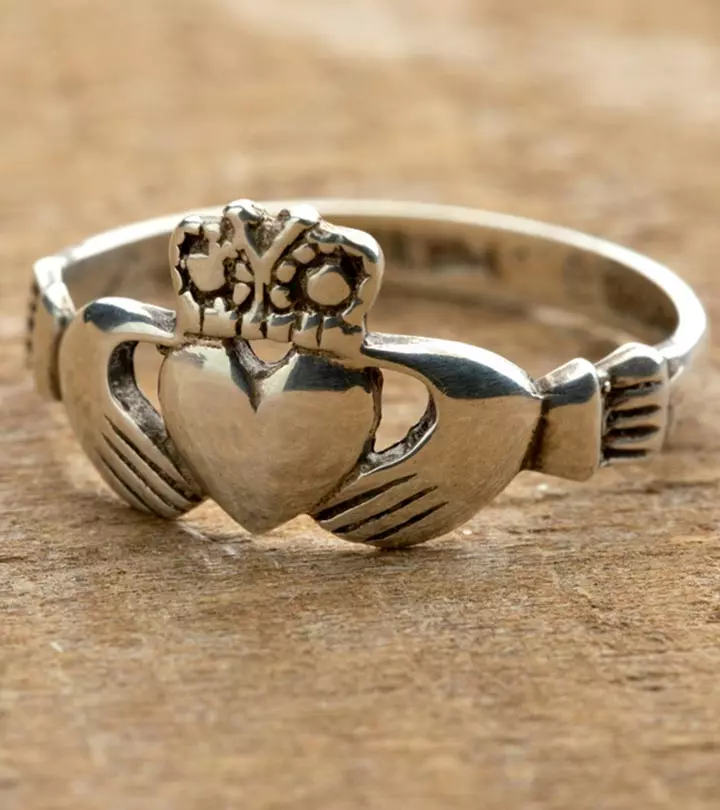

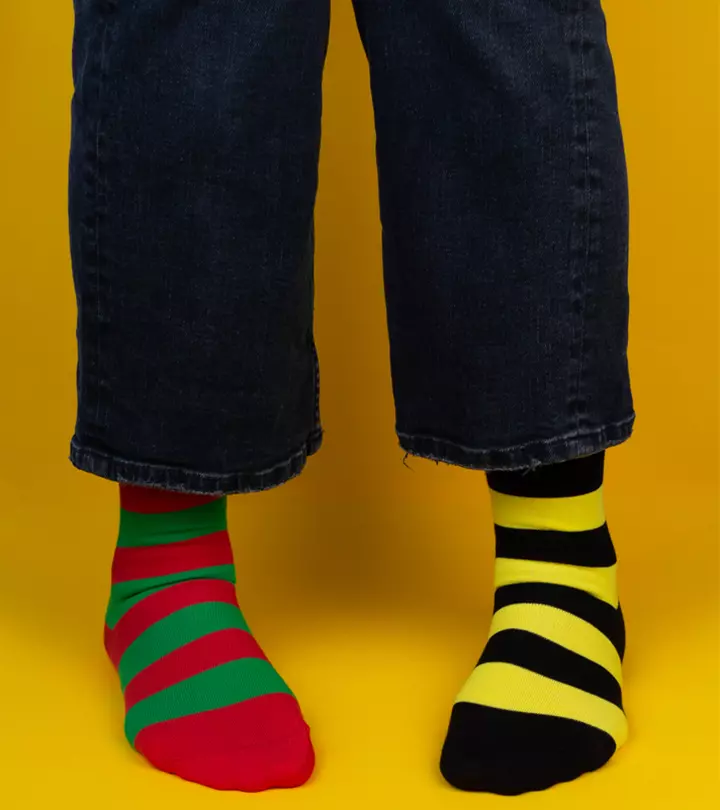

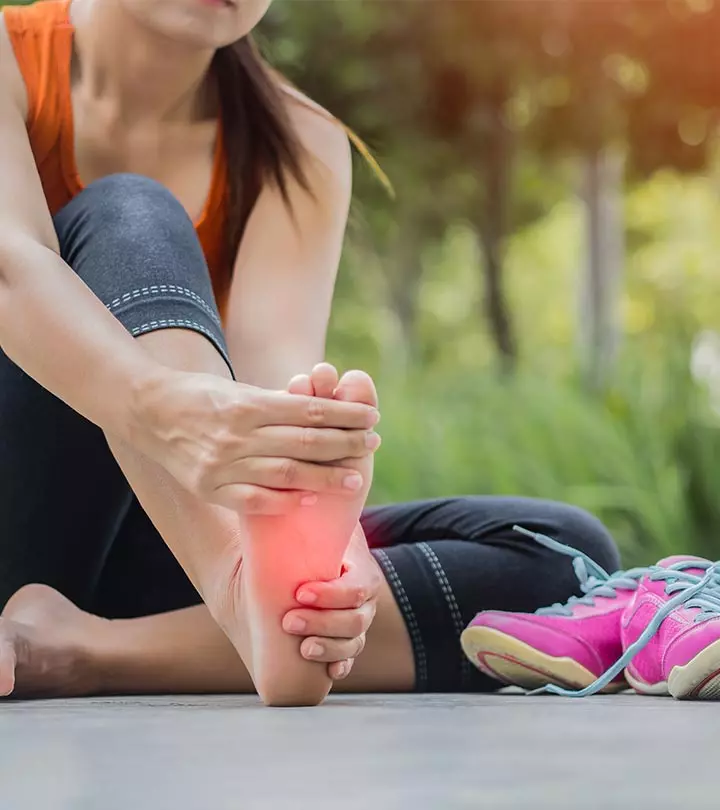












Community Experiences
Join the conversation and become a part of our empowering community! Share your stories, experiences, and insights to connect with other beauty, lifestyle, and health enthusiasts.